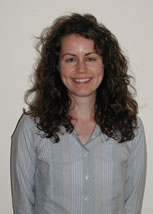
Abstract
It has long been recognized that biological invasions by non-indigenous (i.e., non-native, exotic) plant species are a significant threat to native plant diversity and abundance. Altered soil microbial and fungal communities, however, may be the invisible and more consequential legacy of exotic plants. Recent studies demonstrate that soil microbes and mycorrhizal fungi are extremely important in the maintenance of biodiversity through their effects on individual plant fitness, community composition, and ecosystem processes. Changes to the soil community will have feedbacks on the plant community and vice-versa. We are examining how biological invasion alters the soil microbial and AM fungal communities in a model system: California coastal grassland in various stages of invasion by exotic grasses and nitrogen-fixing shrubs. By using molecular techniques and stable isotopes, we are characterizing the belowground rhizosphere communities of the native and exotic species and quantifying how these changes impact plant fitness, community composition, and ecosystem nitrogen cycling. Ultimately, we can use this information to help eradicate exotic species, restore invaded lands, and potentially prevent future invasions.
Website: https://hawkeslab.wordpress.ncsu.edu/
Follow Christine on Twitter: @hawkeslab
Publications
Belnap J, CV Hawkes, and MK Firestone. In review. Dynamic mesoscale boundaries in soil: sites of nutrient accumulation and transformation. Bioscience.
Other Publications
Hawkes CV. In press. Nitrogen cycling mediated by biological soil crusts and arbuscular mycorrhizal fungi. Ecology.
Hawkes CV. In press. Effects of biological soil crusts on seed germination of four endangered herbs in a xeric Florida shrubland during drought. Plant Ecology.
Hawkes CV and ES Menges. In press. Effects of lichens on seedling emergence in a xeric Florida shrubland. Southeastern Naturalist.
Hawkes CV. 2003. Microorganismos del suelo, plantas en peligro de extinción y la conservación del Matorral de Florida. Ecosistemas 2003/2.
Hawkes CV and BB Casper. 2002. Lateral root function and root overlap among mycorrhizal and nonmycorrhizal herbs in a Florida shrubland, measured using rubidium as a nutrient analog. American Journal of Botany 89: 1289-1294.
Hawkes CV and VR Flechtner. 2002. Biological soil crusts in a xeric Florida shrubland: composition, abundance, and spatial heterogeneity of crusts with different disturbance histories. Microbial Ecology 43: 1-12.
Hawkes CV and JJ Sullivan. 2001. The impact of herbivory on plants in different resource conditions: a meta-analysis. Ecology 82: 2045-2058.
